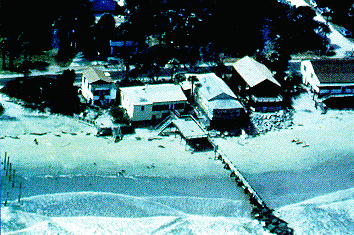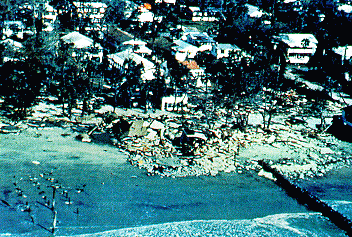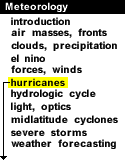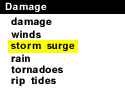
|
One major cause of hurricane damage is storm surge. Storm surge is the rising of the sea level due to the low pressure, high winds, and high waves associated with a hurricane as it makes landfall. The storm surge can cause significant flooding and cost people their lives if they're caught unexpected.
Storm surge can be understood by looking at the video below. The strong winds blowing towards the shore help push water towards shore on the right side of the hurricane's direction of motion. This piling up contributes to most of the coastal flooding.
Also, the central pressure of a hurricane is so low that the relative lack of atmospheric weight above the eye and eye wall causes a bulge in the ocean surface level. This effect is similar to using a straw. When you use a straw, you decrease the air pressure in the straw, and the high pressure pushing down on the rest of the drink pushes the drink up the straw. Here it is the relative higher pressure on the ocean around the outside the hurricane that lifts the ocean surface in the center.

Photo courtesy of NOAA
Ocean waves also contribute to the overall storm surge as the waves which may only be a couple of meters out at sea grow as the ocean depth decreases to several meters at the shore. The photograph below is of the exact same area as the photograph above, but after the storm surge has caused extensive damage.

Photo courtesy of NOAA
Typical storm surge heights vary with the hurricane's intensity, but they can range from only 1 to more than 5 meters (3 to 25+ feet). The inland penetration of the storm surge's damage can vary depending on the topography. In some locations, like Florida, the landscape is quite flat and if the ocean is raised a couple of meters, the intrusion of the storm surge can be as far as a mile or two. Storm surge creates steady flooding, and can wreck homes and pull boats and cars inland or out to sea. Waters that flow into low-lying areas can remain for weeks.

winds |
|

rain |




